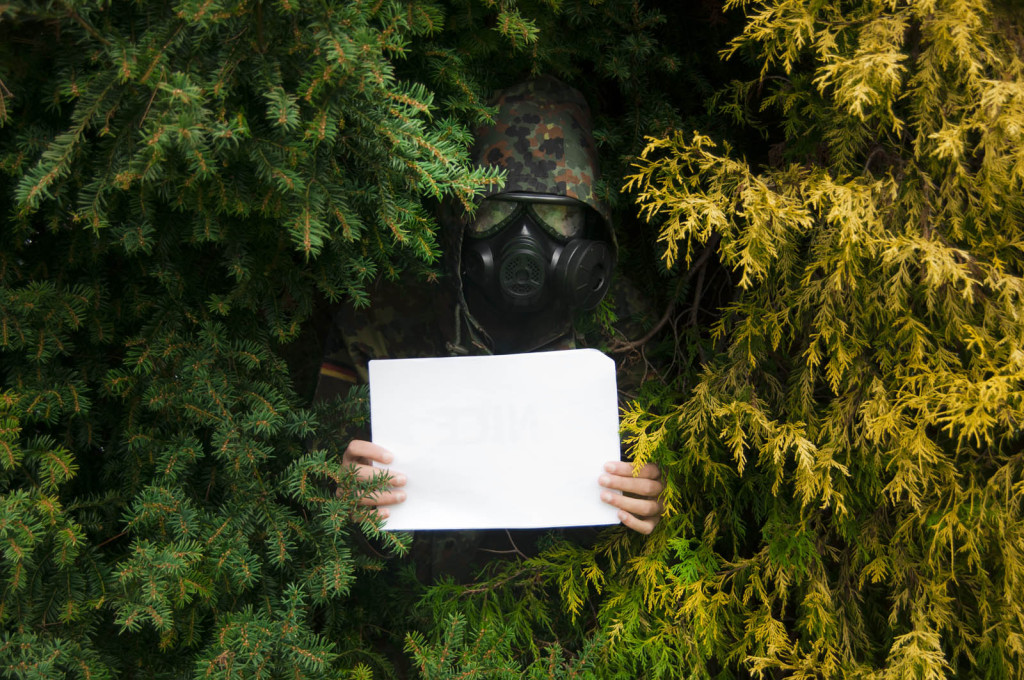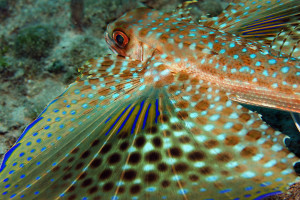
Technologies seem to get attention in waves, depending on when there is a breakthrough development or when there is little that’s new to report. The challenge with very new technologies is to predict with any accuracy how—much less when—they might be applied and what materials would be used to create a functioning product.
Invisibility technologies certainly fit into this scenario, but the proposition is so intriguing. There is new research to report, but how textiles may be used is mostly speculative at this point.
First, about the word “cloaking.” An invisibility cloak has nothing to do with textiles, per se. Furthermore, at the moment, optical invisibility is all about physics, not textiles science. Nevertheless, it’s hard to imagine this technology (or any one of the other invisibility technologies) not including textiles in some way.
These include:
- Optical
- Acoustic
- Tactile
- Thermal
In addition, visual camouflage is becoming so sophisticated that, even though it’s a different science, it is the best means to the end for optical invisibility that exists right now. In fact, with the implementation of smart fabrics, the line between camouflage and invisibility is beginning to disappear.
Camouflaged or invisible?

Although camouflage is not, comparably, quite the high-tech science that invisibility is, digital printing has opened up a wealth of possibilities. The difficulty is in getting it right. The concept of one type of camouflage fitting all scenarios was alluring at one time, but it was tried by the U.S. military and was not successful.
Instead, the U.S. Military, for one, has turned to adjusting camouflage patterns and colors according to the environment where the Military is engaged, and the camouflage needed. (More information about the U.S. Military and camouflage materials will be available in the special Military issue in November Specialty Fabrics Review.)
Smart fabrics have, however, raised the bar on just how far camouflage might go. “Active camouflage” refers to active mimicry of an object’s surroundings, or by changing the object’s appearance as background changes occur, making it effectively invisible—comparable, in a way, to what might occur in the natural world with a chameleon or many species of marine animals.
There are a variety of means, theoretically, to do this, some of which blur the line between camouflage and invisibility.
Hyperstealth Biotechnology Corp. based in Maple Ridge, B.C., Canada, sells a product called SMARTCAMO™, which has been available since at least 2010. According to the company, the product has the ability to change color and intensity by using “fractals,” a repeating pattern that displays at every scale level.
In 2011, Hyperstealth announced Quantum Stealth, which the company’s president/CEO Guy Cramer says makes an object completely disappear by bending light waves around it. Just this year, the company says that it intended to release a “dumbed-down” version of Quantum Stealth, which “allows it to function for the commercial market without providing the public with a number of the key elements.” The holdup with moving forward is connected to an agreement the company says that it has with the U.S. Military.
Also this year, Hyperstealth announced a product called “Phantom Bogey,” a deceptive decoy technology that functions as a reversal of invisibility technology by making the “bad guys” see something that isn’t really there. This can be used with large-scale objects, the company says, such as tanks.
Not there yet

Researchers elsewhere, however, say that active camouflage is still in the future. A team of scientists at the University of Michigan released a report in April 2014 that suggests that active camouflage is just “possible.” An article released by the university says that researchers “have discovered a template-free method for growing shaped crystals that allows for changeable structures that could appear as different colors and patterns. The ability to control crystals with light and chemistry could lead to chameleon-style, color-changing camouflage for vehicle bodies and other surfaces.
“One source of color in crystal structures is the spacing between the particles that make up the crystal. The spacing can determine which colors of light the crystal absorbs and which it reflects, resulting in the visible color. By changing the spacing and other aspects of the crystal structure, it is possible to change the color.” The change occurs due to a chemical reaction set off by ultraviolet light.
Youngri Kim, a doctoral student in chemical engineering, led the study; Mike Solomon, professor of chemical engineering, is Kim’s advisor. The findings are significant—and solid enough—for Solomon and Kim to speculate on the how the technology might best be used. They would most like to see “a thin-film system in which the crystals can be modified on demand, changing the color and pattern of an object for the ultimate camouflage. Such a system could also lead to new ways to update images on e-readers and large displays, such as billboards,” the university’s press release says.
Recent research

Advances in optical invisibility have been based primarily on two advances, according to a 2013 report in MIT Technology Review. One is “transformation optics,” which is the ability to bend light around an area to make it look as if it’s not there; the other involves the creation of metamaterials, which are “synthetic substances with optical properties unknown in nature that can be designed to achieve this goal,” the article states.
One of the obstacles to overcome has been that the “invisibility” effect does not function at all angles and can only hide very tiny objects. However, John Howell at the University of Rochester, New York, and Benjamin Howell built a device with conventional mirrors and lenses—without the use of more complex metamaterials—that will hide an object as big as a human.
Magicians have used a similar technique for a long time. “The point we wish to emphasize is not the novelty, but the ease of scaling to a nearly arbitrary size,” the researchers say.
Karlsruhe Institute of Technology (KIT) physicists announced in July of this year that they had built an optical invisibility cloak for diffusive medium. According to the KIT press release, “KIT physicists have now succeeded in manufacturing with relatively simple means and testing an ideal invisibility cloak for diffusive light-scattering media, such as fog or milk.” They know the experiment worked because the object cloaked did not cast a shadow.
“Ideal optical invisibility cloaks in air have a drawback,” Martin Wegener, one of the physicists who conducted the study says. “They violate Albert Einstein’s theory of relativity that prescribes an upper limit for the speed of light. … In diffuse media, in which light is scattered several times, however, the effective speed of light is reduced. Here, ideal invisibility cloaks can be realized.”
Practical application, generally, appears to be a long ways off, and how textiles participate is less clear. However, textiles can be engineered with an array of materials to look, feel and function as the end use requires. Smart fabrics used in high-tech camouflage are obvious enough; reflective textile materials, such as the ones used in the “invisible barn” project (see “Now you see it …” on this site), may be useful. Beyond that, textiles may be used in a supporting role behind the scenes—where you don’t see them.
 TEXTILES.ORG
TEXTILES.ORG


